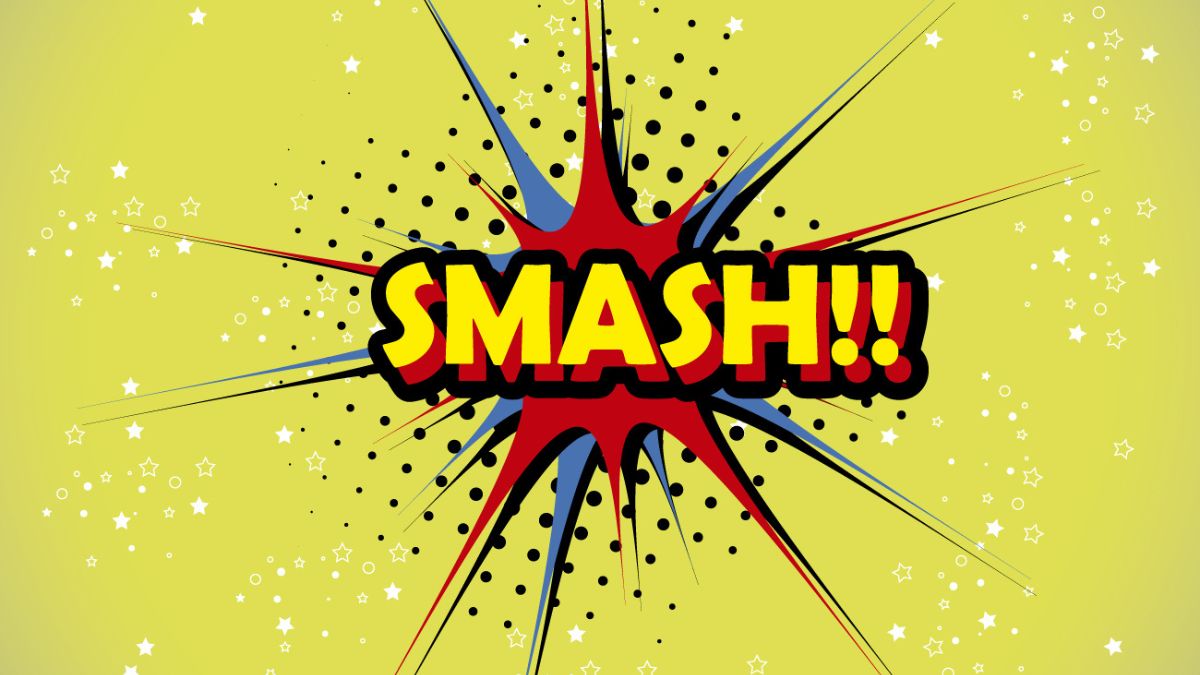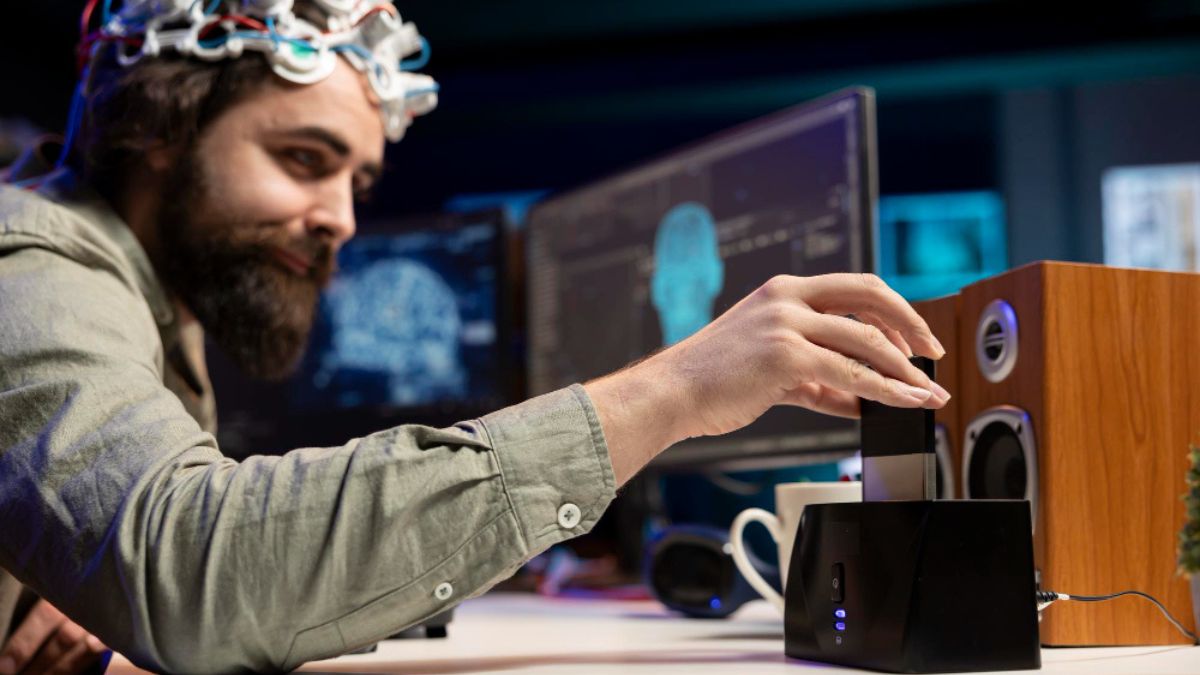It happens in a flash. A flicker of hesitation in a video call. A slightly-too-perfect product review. The gnawing feeling after a news headline that something is off, but you can’t quite put your finger on it. We live in an age of unprecedented connection, yet we are suffering from a profound crisis of trust. Our digital interactions, for all their efficiency, are stripped of the subtle, subconscious cues that have guided human connection for millennia.
We’ve tried to solve this with more information. Fact-checkers, verification badges, complex privacy policies. But information is not the same as trust. Trust is a feeling, an instinct, a gut-level calculation based on a thousand tiny data points we process without thinking.
What if technology could give us that gut back? What if, instead of just giving us more data, it could help us feel the truth?
This is the promise, and the profound challenge, of Candizi.
Candizi (a portmanteau of “Candor” and “IZ,” for “Index” or “Interface Zone”) isn’t a single product or a specific app. It’s an emerging technological paradigm—a suite of tools and algorithms designed to measure, display, and incentivize authenticity in digital communication. It’s the digital equivalent of a “truth serum,” not in the literal sense of forcing confession, but in its ability to illuminate the subtle signals of honesty and deceit that permeate our online lives.
This is the story of Candizi. It’s a story about the desperate human need for trust in a digital world, the controversial technology rising to meet it, and the enormous ethical tightrope we must walk to ensure it builds a more genuine future, rather than a dystopian panopticon.
The Trust Deficit – Why We Need Candizi
To understand the value of Candizi, we must first diagnose the illness of our current digital ecosystem. I call it the Authenticity Anemia—a systemic thinning of genuine human connection online.
The Flatness of Digital Communication
When we communicate face-to-face, we are processing a symphony of data. It’s not just the words. It’s the micro-expressions that flash across a face for 1/25th of a second. It’s the subtle changes in vocal pitch, the pace of speech, the posture, the eye contact. Our brains are hardwired to integrate all of this information into a holistic judgment of intent and credibility.
Digital communication, by contrast, is starkly flat. Text is devoid of tone. Even video calls, with their latency and compressed audio, strip away crucial layers of this data. This creates a fertile ground for what psychologists call the “Truth Default Theory.” We are cognitively biased to believe what we are told, unless warning signs are triggered. In a flat medium, those warning signs are often missing.
A scam email can sound perfectly plausible. A deepfake video can be convincing. A charismatic influencer can sell a lie with a smile that pixelates just enough to hide its insincerity. Our innate lie-detection kit is broken online.
The Perversion of Perfection
Social media has created a culture of performative perfection. We curate our lives into highlight reels. We use filters to smooth our skin and alter our realities. This isn’t just about vanity; it’s a systemic pressure to present an idealized, and therefore inauthentic, version of ourselves. This constant performance erodes trust in two ways: we become skeptical of others’ perfections, and we feel pressured to hide our own imperfections, creating a vicious cycle of fakery.
The Bot Problem
A significant portion of online interaction isn’t human at all. Bots masquerade as people to sway public opinion, manipulate markets, and spread misinformation. When you can’t be sure if you’re talking to a person or a program, the very foundation of social trust crumbles.
This Authenticity Anemia has real-world consequences. It polarizes our politics, makes us vulnerable to fraud, undermines our mental health, and makes genuine business collaboration harder. We are starving for something real. This hunger is the fuel driving the development of Candizi.
What is Candizi? The Mechanics of Measuring Truth
Candizi is not a magic box that spits out a “Truth” or “Lie” verdict. That would be both technologically impossible and ethically monstrous. Instead, Candizi is better understood as a “Authenticity Profiling” system. It uses a multi-layered approach to analyze digital communication and generate a probabilistic assessment of credibility.
Think of it as a sophisticated, AI-powered version of your own gut instinct, trained on massive datasets of human behavior.
Layer 1: The Biometric Layer (The Unconscious Leak)
This is the most controversial and sci-fi-like aspect of Candizi. Using the sensors already embedded in our devices—cameras and microphones—Candizi algorithms can perform real-time analysis of subtle physiological cues.
-
Vocal Biomarkers: By analyzing the acoustic properties of a voice—its pitch, jitter, shimmer, and spectral patterns—algorithms can detect signs of cognitive load and stress, which are often correlated with deception. A voice might become slightly higher pitched or more monotonous under pressure.
-
Micro-Expression Analysis: The camera can track tiny, involuntary facial movements that are universal and incredibly difficult to fake. A flash of contempt or fear, lasting mere milliseconds, can be detected and flagged as incongruent with the spoken words.
-
Eye-Tracking and Pupillometry: Where a person looks (or avoids looking) and subtle changes in pupil dilation (a sign of cognitive effort or arousal) can be indicators of discomfort or fabrication.
It’s crucial to understand that these signals are not proof of lying. They are indicators of emotional congruence. If someone is telling a sad story with a genuine micro-expression of sadness, their Candizi score would reflect high congruence. If they are telling the same story while their face subtly leaks micro-expressions of joy or contempt, the score would be lower, indicating potential incongruence.
Layer 2: The Behavioral & Linguistic Layer (The Digital Footprint)
This layer analyzes the content and patterns of communication itself, separate from the body.
-
Linguistic Analysis: This involves examining word choice. Truthful accounts tend to be more spontaneous, contain more sensory details, and include more first-person pronouns. Deceptive language can be more formal, less specific, and contain more negative emotion words. Candizi would scan for these linguistic patterns.
-
Behavioral Consistency: Candizi can analyze a user’s historical behavior. Does this post align with their typical values and communication style? Is this purchase review part of a sudden, suspicious pattern of activity? A sudden, radical shift can be a red flag.
-
Network Analysis: Is this person who they say they are? Candizi can lightly map their digital connections. A profile with a deep, interconnected web of authentic-looking relationships is more credible than an isolated island with few, weak ties.
Layer 3: The Provenance & Source Layer (The Verifiable Fact)
This is the least controversial but most foundational layer. It’s about verifying the origin and history of information.
-
Digital Watermarking and NFTs: For creative work, Candizi could integrate with systems that immutably record the origin and ownership of a piece of content, making it easy to distinguish an original photo from a manipulated one.
-
Source Credibility Index: Candizi would cross-reference information with known, vetted databases of facts and the historical credibility of the source publishing it.
The Candizi Score: A Composite Picture
All of these layers are fed into an algorithm that generates a simple, easy-to-understand output: a Candizi Score or a “Congruence Indicator.” This wouldn’t be a single number, but more like a traffic light or a spectrum.
Imagine:
-
On a video call: A subtle green halo around the person’s video feed indicates high congruence. A yellow halo might suggest some inconsistencies. A red halo would be a strong warning of incongruence (this would likely be reserved for extreme cases to avoid abuse).
-
On a product review: A “High Candizi” badge next to a review, indicating the reviewer has a history of authentic behavior and their language/biometrics (if they did a video review) showed high congruence.
-
On a dating profile: A profile verified not just by a photo, but by a Candizi analysis of a short video introduction, giving potential matches a sense of the person’s genuine demeanor.
The power of Candizi is not in a definitive judgment, but in restoring the subtle, subconscious data we need to make our own informed trust decisions.
Candizi in the Wild – Glimpses of an Authentic Future
While a unified “Candizi Standard” doesn’t exist yet, the components are already being built and tested in various sectors. These are the early tremors of the Candizi earthquake.
1. The High-Stakes Deal: Remote Negotiations
A financial firm is negotiating a multi-million dollar merger via video conference. Each executive uses a Candizi-enabled platform. As the CFO presents the numbers, her Candizi indicator remains a steady green, reinforcing her confidence. When a VP makes a claim about a competitor, his indicator flickers yellow. This doesn’t mean he’s lying, but it prompts the other side to ask more probing questions, uncovering a crucial piece of information that was being glossed over. The technology doesn’t replace due diligence; it makes it more efficient and human-centric.
2. The Future of Dating: Beyond the Filter
On a next-generation dating app, profiles feature a “Candizi Video Intro.” Users see not just a curated photo album, but a short, unedited video that generates a Candizi authenticity score. The score isn’t about attractiveness, but about congruence. It helps users gravitate toward people who present their genuine selves, reducing the disappointment and deception common in online dating and leading to more meaningful first connections.
3. The Trustworthy Review: The End of Fake Feedback
An e-commerce platform integrates Candizi. When you write a review, you have the option to record a short video testimony. The platform’s Candizi system analyzes it for authenticity. Reviews with a high Candizi score are prioritized. Paid reviewers or bots, who would struggle to maintain biometric and behavioral congruence, are quickly identified and demoted. You can finally trust the five-star ratings.
4. Mental Health and Telemedicine: A Window to Well-Being
A therapist conducting a teletherapy session uses a Candizi tool (with the patient’s full consent) to monitor subtle vocal and facial cues that might indicate anxiety or depression that the patient is struggling to articulate. The tool might flag a micro-expression of despair when the patient says “I’m fine,” allowing the therapist to gently probe deeper. Here, Candizi isn’t about catching lies, but about fostering deeper empathy and understanding.
The Ethical Minefield – The Dark Side of Candizi
The potential for abuse, bias, and societal harm with Candizi is so enormous that it threatens to overshadow its benefits. To embrace Candizi responsibly, we must stare directly into these dangers.
1. The Ultimate Tool for Discrimination and Bias
This is the greatest threat. If the algorithms that power Candizi are trained on biased data, they will produce biased results. Imagine:
-
Cultural Bias: Micro-expressions, while largely universal, can have different frequencies and interpretations across cultures. An algorithm trained predominantly on Western faces might misinterpret a neutral expression from an East Asian individual as “shifty” or “deceptive.”
-
Neurodiversity Bias: Individuals with autism or social anxiety may display vocal patterns and eye contact that differ from the neurotypical majority. A Candizi system could systematically penalize them, branding them as “inauthentic” and further marginalizing them.
-
The “Authenticity” Straightjacket: Candizi could create pressure to conform to a narrow, algorithmically-defined version of “normal” emotional expression. Spontaneity, eccentricity, and unique communication styles could be pathologized as incongruent.
2. The Erosion of Privacy and the Panopticon
Candizi requires constant, intimate monitoring. To have a Candizi score, you must be watched. This creates a world where every pause, every stumble, every flicker of emotion is captured, analyzed, and potentially stored. Who owns this data? Could it be used by employers to screen for “deceptive” employees? By governments to identify “disloyal” citizens? The potential for a totalitarian surveillance state is terrifyingly real.
3. The Perfection of Deception
There is an arms race dynamic. As Candizi gets better at detecting deception, the technology for creating deception will also advance. We could see the development of “Candizi Spoofing” software—AI that can generate perfectly congruent micro-expressions and vocal patterns to fool the system. This could make sophisticated deepfakes utterly undetectable, creating an even worse crisis of trust.
4. The Death of Context and the White Lie
Human relationships are not built on brutal, unvarnished truth. They are built on tact, compassion, and sometimes, harmless white lies. “Do I look good in this?” “Yes, you look great!” The micro-expression of hesitation before the answer is what makes the lie kind. A Candizi system that flags this as “incongruent” would make a mockery of social grace. It could create a world of robotic, literal interactions devoid of the empathy that sometimes requires us to soften the truth.
The Path Forward – Humanizing Candizi
Given these apocalyptic risks, should we abandon Candizi altogether? Perhaps not. The genie of authenticity-tech is already leaving the bottle. The question is not if it will be developed, but how we will guide its development. We need a human-centric framework for Candizi, built on core principles.
Principle 1: Radical Transparency and User Sovereignty
Candizi must be opt-in, always. Users must have complete control over when it is active and who sees their data. The algorithms must be open to audit. Most importantly, the output should not be a simple “Truth/Lie” verdict but a transparent dashboard. “We detected a 12% increase in vocal stress when you discussed Topic X, and a micro-expression of fear.” The user—the human being—is the final interpreter of this data, not the algorithm.
Principle 2: Anti-Bias as a First Principle
The development of Candizi must be led by diverse teams of psychologists, anthropologists, and ethicists. Training datasets must be incredibly diverse across cultures, neurotypes, and demographics. Continuous bias testing must be mandatory.
Principle 3: Contextual Integrity
Candizi must be context-aware. The “rules” for a high-stakes business negotiation are different from those for a casual chat with a friend. The system should be calibrated for the specific social context and should be disabled by default in private, intimate settings.
Principle 4: The Right to Obfuscate
Just as we have a right to privacy, we may need a “right to digital obfuscation” in a Candizi world. This could involve tools that allow users to deliberately mask their biometric data if they choose, to protect themselves from unwanted analysis.
Conclusion: The Mirror and the Mask
Candizi holds up a mirror to our deepest desire: to connect authentically in a world saturated with digital masks. It reflects our yearning for truth and our exhaustion with performance. But the mirror itself is not neutral. It is shaped by our biases, our fears, and our choices.
The development of Candizi is not just a technological challenge; it is a societal one. It forces us to ask ancient questions with new urgency: What is truth? What is the role of deception in a healthy society? How much transparency can a human soul bear?
The future of Candizi will not be determined in a lab alone. It will be determined in legislative chambers, in ethical boardrooms, and in public discourse. It is a conversation we must all be part of.
Used wisely, with humility and robust ethical guardrails, Candizi could help us build a digital world that is more trustworthy, empathetic, and genuine. It could help us see each other more clearly, not to judge, but to understand.
But if we charge ahead blindly, prioritizing efficiency over humanity, Candizi could become the most sophisticated tool of social control ever invented, perfecting discrimination and extinguishing privacy.
The choice is ours. Candizi is not just a technology for measuring truth. It is a test of our own character. Will we use this power to build bridges of understanding, or walls of judgment? The answer will define the next chapter of our digital lives.






